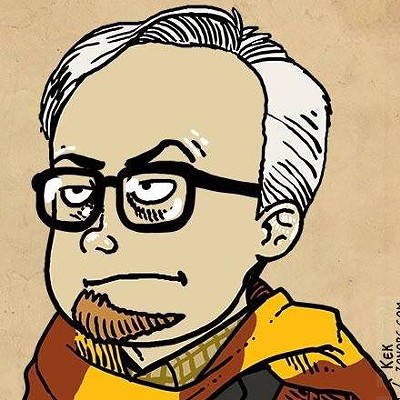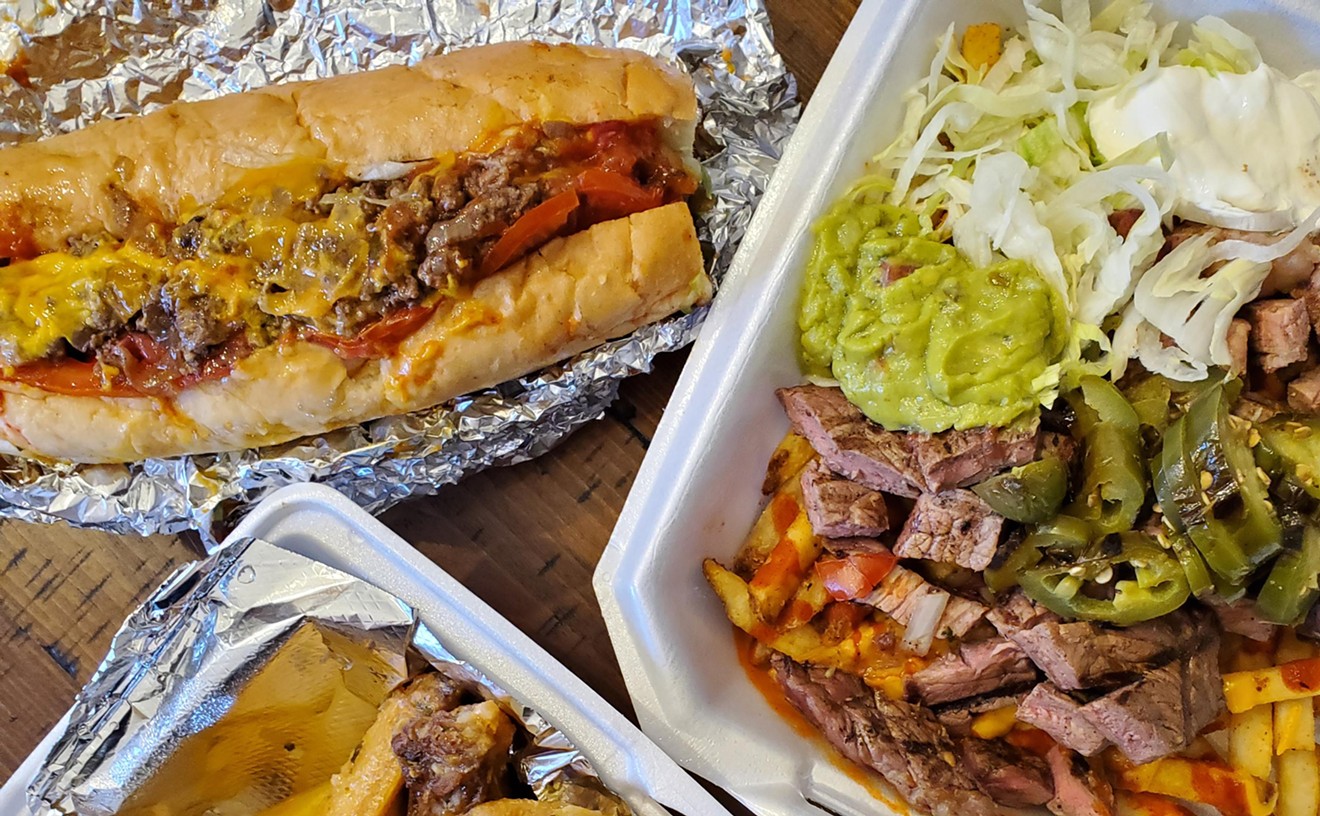Patsy’s, Pagliacci’s, Carbone’s, Longo’s Subway Tavern: They’re all gone. These were just a few of the Italian eateries that helped define — and feed — the quadrant of Denver known for over a century as northwest Denver, the Northside or simply north Denver. But the area bounded roughly by I-70, I-25, Colfax Avenue and Sheridan Boulevard is no longer an Italian enclave, and its old nicknames have been replaced by neighborhood designations that, while historically accurate, were rarely used by locals decades ago. Now real-estate brokers and trendsetting entrepreneurs add cachet to properties by invoking the names of Sunnyside, Berkeley, Jefferson Park, Highland (no s on the end, please), Sloan’s Lake — and the dreaded LoHi, the imprimatur of the sort of urban infill and gentrification that many longtimers lament is destroying Denver’s soul.
But one landmark hasn’t changed since it first showed up at the corner of West 38th Avenue and Newton Street on May 10, 1953: Carl’s Pizza. At least it hasn’t changed much, according to current owner John Ludwig, who landed his first job at Carl’s in 1976, the year he turned sixteen. Carl’s initially opened as a one-room restaurant, but its founder, Carl DiGiacomo, a former cook in the Merchant Marine, expanded the space twice in the 1960s by taking over some dental labs that had shared the building. Otherwise, the brick building with its red, white and green cinder-block panels and the Carl’s sign with its jiggly Googie lettering have stood watch as the neighborhood around it evolved over the past 63 years.
The menu hasn’t changed much, either. Ludwig’s kitchen crew still makes sausage and meatballs from scratch and still mixes dough daily for pizzas that are neither thick nor thin. “Carl was from Chicago,” Ludwig notes, “but he’s always done a medium crust.”
One of the few changes to the menu came in 1983, when the restaurant finally earned a liquor license. “Carl had a bit of a gambling background,” Ludwig recalls, “so they didn’t want him to have one.”
DiGiacomo’s gambling background was almost part of the job description for owning an Italian restaurant at the time in north Denver, where the local version of the Cosa Nostra, the Smaldone family, operated Gaetano’s — a restaurant that’s still standing, though it’s been sold a couple of times and renovated as often. DiGiacomo used to run a card game in the back room at Carl’s — a game frequented by Joe Briola, a bookie and collector for the Smaldones, according to Ludwig. And DiGiacomo also played cards at other Italian hangouts around town.
“Denargo Market was big back in those days,” Ludwig explains. “They had a big barbu [card] game going on. They shot Carl in the buttocks.” As it turns out, DiGiacomo was in the wrong place at the wrong time and took a bullet when a rival gang decided to raid the card game, making off with more than $20,000 after shooting up the old produce market (which burned to the ground in the 1970s and now lends its name to a modern apartment complex).
Ludwig was born at the old St. Anthony’s Hospital (which was recently demolished to make way for new condos and townhomes just south of Sloan’s Lake) into a German-Italian family and attended North High School. He got his start at Carl’s as a delivery driver but soon moved into the kitchen. “I liked it from the beginning,” he remembers. “It was kind of meant to be.”
DiGiacomo had two sons, one who passed away in the 1970s and the other who didn’t follow in his father’s food-industry footsteps. So Ludwig became a surrogate heir to the business and was running Carl’s by the early ’80s. But despite DiGiacomo’s brushes with death and his love of fast cars (he sponsored automobile racers at local tracks, as can be seen in photos adorning the restaurant’s walls), he lived to the age of 83 and never relinquished ownership during his lifetime. When he died in 2004, Carl’s passed to DiGiacomo’s sister; Ludwig bought it from her in 2005.
“It’s still a basic blue-collar restaurant,” Ludwig states. “We try to keep the prices to the neighborhood.” Or at least to the neighborhood as he remembers it.
Many of the young people moving into the area have discovered Carl’s and helped keep business strong. For that reason, Ludwig has a sanguine attitude about the development that has flooded northwest Denver with new buildings filled with restaurants, apartments and townhouses that sport an architectural style distinctly at odds with the old bungalows and Denver Squares. “Some of it, I don’t think it really fits,” Ludwig says.
Still, growth has been mostly a positive thing for Carl’s. “I make a decent living here and I employ twenty people,” he explains. “Mainly the cooks stay the same.” One prep cook has lasted for three decades, and Bob, the night manager, started there in 1985.
Although Carl’s is well over half a century old, neither DiGiacomo’s sister nor Ludwig owns the building. Leasing the space means there’s an ever-present concern that the building could sell and that new owners could level the property or raise the rent to an untenable level. But Ludwig isn’t too worried; he just signed a new ten-year lease on the corner space that comes complete with parking.
Ludwig has seen a lot of restaurants come and go in the neighborhood. The original Carbone’s Bakery became Lechuga’s in 1990 (Lechuga’s itself was sold two years ago). Three Sons opened in the space that’s now Cafe Brazil before moving to what is now Ernie’s Bar & Pizza (which in turn takes its name from Ernie Capillupo, who opened a restaurant there in 1948) and then heading west to its current Arvada home. A spot on Tejon Street called the Marigold Cafe was one of the most popular eateries in the area before a police officer was killed while eating dinner there with his family; after that, business dwindled until the place closed in the ’70s. Ludwig can talk about all of those places, but he asks if Parisi is any good; he’s never been, and considers it “new” even though it’s been in the Berkeley neighborhood since 1998. (Parisi also occupied the Cafe Brazil space before moving to 44th and Tennyson.)
North Denver was probably never the idyllic American neighborhood that some paint it to be; with its location on the edge of more industrial areas and railways, transition has inevitably been part of the story. Italian-Americans moved to the suburbs and Mexican immigrants filled the gaps, bringing new flavors and establishing their own restaurants, which have also withstood the test of time. (Chubby’s is only now constructing a dining room after decades of running as a walk-up counter.) Packs of kids on bikes whizzing between home, the bakery, the butcher and the malt shop may be a thing of the past, but Highland, Sunnyside and Berkeley are enjoying an unprecedented boom.
We can decry the “Denver Fugly” architecture even as we enjoy craft beer brewed within blocks of our favorite restaurant patio — and for now, we can still head to Carl’s for a glass of red wine and a “Little Immigrant,” the sandwich that Carl DiGiacomo created to capture the flavor of his neighborhood. Just be sure to toast John Ludwig, who’s keeping this slice of old Denver alive.
[
{
"name": "Air - MediumRectangle - Inline Content - Mobile Display Size",
"component": "12017618",
"insertPoint": "2",
"requiredCountToDisplay": "2"
},{
"name": "Editor Picks",
"component": "17242653",
"insertPoint": "4",
"requiredCountToDisplay": "1"
},{
"name": "Inline Links",
"component": "18838239",
"insertPoint": "8th",
"startingPoint": 8,
"requiredCountToDisplay": "7",
"maxInsertions": 25
},{
"name": "Air - MediumRectangle - Combo - Inline Content",
"component": "17261320",
"insertPoint": "8th",
"startingPoint": 8,
"requiredCountToDisplay": "7",
"maxInsertions": 25
},{
"name": "Inline Links",
"component": "18838239",
"insertPoint": "8th",
"startingPoint": 12,
"requiredCountToDisplay": "11",
"maxInsertions": 25
},{
"name": "Air - Leaderboard Tower - Combo - Inline Content",
"component": "17261321",
"insertPoint": "8th",
"startingPoint": 12,
"requiredCountToDisplay": "11",
"maxInsertions": 25
}
]











